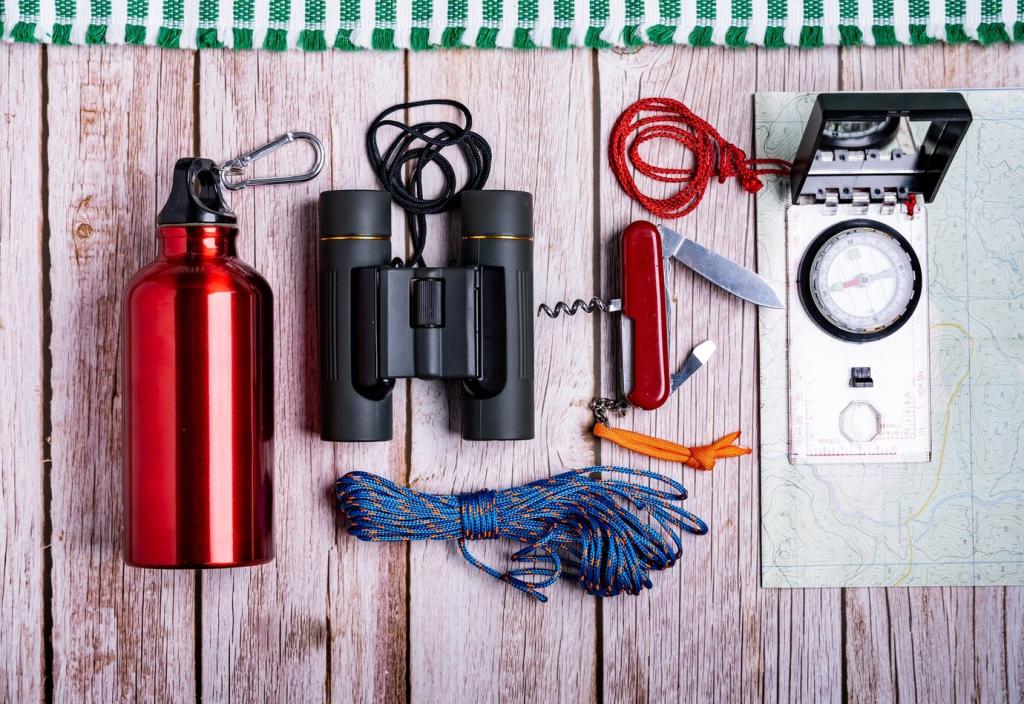Mastering Layering Techniques for Cold Weather Hiking
Chosen theme: Layering Techniques for Cold Weather Hiking. Welcome to a trail-tested guide that turns frigid forecasts into confident steps. We’ll unpack smart systems, real stories, and pro tips you can apply today. Join in, share your experience, and subscribe for fresh, seasonal insights.

The Three-Layer System, Demystified
Start with a snug, moisture-wicking base layer that pulls sweat away before it chills you. Merino wool resists odor and regulates temperature; synthetics dry fast and often cost less. Avoid cotton at all costs. Choose weight by forecast and effort: lightweight for high output, midweight for steadier pace.

The Three-Layer System, Demystified
Your mid-layer traps warmth but should let moisture escape. Think fleece grids for breathability, active insulation for stop-and-go efforts, or a packable puffy for longer rests. Synthetic stays warm when damp; down excels when it’s cold and dry. Adjust this layer first as your pace fluctuates.


Fabric Choices That Actually Matter
Merino balances warmth, breathability, and odor resistance across changing temperatures—ideal for multi-day trips. Synthetics move moisture quickly, dry fast, and often weigh less, perfect for high-output days. Blend fabrics to get the best of both. Test on a short loop to feel differences before committing.
Fabric Choices That Actually Matter
Down offers unmatched warmth-to-weight and compresses small, but loses loft when wet without protection. Synthetic insulation retains heat even damp and dries faster, making it dependable in mixed conditions. If storms loom, lean synthetic; in cold, dry high pressure, down shines. Consider hybrid jackets for versatility.
Layering for Pace, Weather, and Terrain
Begin slightly cool at the trailhead to prevent sweat buildup during the first climb. Open vents early and shed a layer before you feel hot. Warmth is easier to add than moisture is to remove. Keep gloves accessible so a quick stop doesn’t chill your hands instantly.
Layering for Pace, Weather, and Terrain
Wind steals heat fast, especially above treeline. Carry a light wind shell ready in an outer pocket for instant protection. Expect temperatures to drop with elevation and shade, and add layers before you crest a ridge. A buff and hood combination can blunt sudden gusts without overheating you.


Field Stories: Lessons From Frost and Snow
We left under cobalt skies, wearing a light fleece and wind shell. By noon, a squall erased the trail. A fast swap to a waterproof shell and synthetic puffy kept us steady. The takeaway: pack for the day you don’t expect, not just the morning you see.
Field Stories: Lessons From Frost and Snow
A partner pushed hard in a heavy mid-layer, soaked it on the climb, then chilled dangerously at lunch. Dry backup gloves and a quick layer shuffle turned it around. The lesson is simple: manage moisture first, even if it means pausing to shed layers before the big ascent.
Hands, Feet, and Head: Extremity Layering
Sock Systems and Vapor Barriers
Pair a thin liner with a midweight wool hiking sock for long, cold days. In frigid conditions, a vapor barrier liner can prevent sweat from soaking insulation. Adjust boot fit for extra layers, and carry a dry change for camp. Foot powder helps reduce moisture and friction.
Glove Layering That Actually Works
Run a wicking liner, a breathable softshell glove for moving, and insulated mitts or overmitts for stops. Keep a spare liner pair sealed in a pocket. Use wrist leashes so gloves never blow away on ridges. Practice swaps at home until you can change layers without fumbling.
Head and Neck: Micro-Adjustments With Big Impact
A beanie, buff, and adjustable hood cover most scenarios without overheating. Add a brimmed cap under the hood for blowing snow. A balaclava earns its keep in spindrift. Remember, heat loss depends on exposure, not magic percentages; cover what’s bare and vent fast when you start to sweat.
Packing and Maintenance for Reliable Layers
01
Smart Packing: Fast Access, Dry Storage
Place your wind shell and puffy at the very top or in outer pockets for instant grabs. Use a pack liner or compactor bag to keep insulation dry. Color-code stuff sacks by layer type. A small sit pad prevents heat loss during quick snack breaks in the snow.
02
Care Routines That Restore Performance
Wash merino gently, avoid fabric softeners, and dry flat. Clean shells with technical detergent, then low-heat tumble to revive DWR. Reproof when wetting out starts. For down, use dryer balls to restore loft. A simple repair kit keeps zippers, drawcords, and patches trail-ready all season.
03
Decision Logs and Gear Notes
After each hike, jot what worked, what overheated, and where you felt cold. Track temperatures, wind, and pace. Those notes shape smarter layer choices next time. Share your template in the comments, and subscribe to receive a downloadable logbook designed specifically for cold weather layering experiments.
